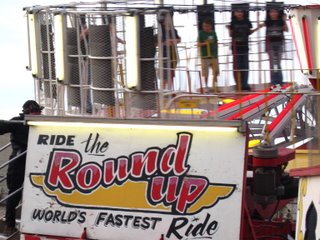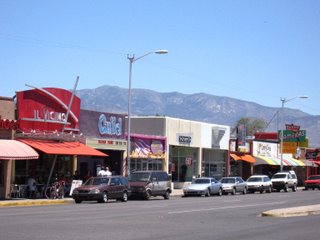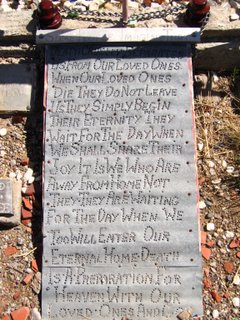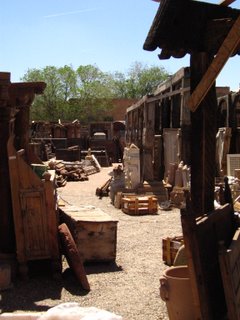It would be easy enough to disparage Farmington. The same strip mall with a "permanent makeup" store has a marqee that advertises a "gas pill" that will suddenly grant you tens, if not hundreds, of extra miles per tank. Teenage boys lean out the passenger windows and yell at you—"What's uuuupppp?"—then circle back around to do it again. Sometimes they shout "Jesus!"—well, "gee-zuss"—but it's unclear whether that's some sort of ecumenical call to arms or just the sort of thing the teenage boys of Farmington shout from cars at 25 mph.
It would also be easy to defend Farmington in a lazy, faux-populist, David Brooks sort of way, where these are salt-of-the-earth people and as a big city interloper I just don't get it. I could even cite Farmington's two brewpubs as evidence of rural sophistication and belief in craftsmanship.

Instead, I stumbled upon the Riverfest Carnival, which was on a downtown creek. And the carnival was just so, well, earnest.
Carnivals are like that. They feel almost anachronistic now, not just because cars, jets, and computers have shrunk the world but also because, really, who gets their kicks from skeeball? Even the prizes (inflatable alien, cap gun, giant stuffed The Roadrunnertm) aren't particularly worth it.
Which is why carnivals are greast, especially carnivals in smaller towns like Farmington (population: 37,844) where the four teenagers with eyeliner and dyed black hair hang out with a Navajo cowboy and a red-headed kid in a "Dance for Him" sweatshirt ("Him" meaning the crucified Jesus in the picture). Everyone above the age of 10 knows the games are fixed, but that's okay, it's a carnival. As if everyday judgements of who to associate with and what to avoid are altered in the hypnotic call of the carnival barker.

Perhaps the most uncomfortable thing I saw was a man wearing a t-shirt that read "Bull riders ride anything horny" while holding the hand of his daughter or granddaughter.
Perhaps the most disturbing thing everyone else saw was me, taking pictures of the children as they ran out of fun houses and were twirled by the Tilt-A-Whirl.

In "A Ticket to the Fair," David Foster Wallace theorized that rural folk go to fairs precisely for the crowds, the lines, the hucksters. Fairs are a little bit of city bustle, for them, a change of pace. A carnival, like a fair, is a city created overnight, an empty field that suddenly has bright neon lights and confusion and extreme density.
But it's a city of the rural imagination, of the same people at the Ben Franklin or the Sonic Drive-in, a city that is small and familiar and easy to navigate. A city where the band plays not something new and perhaps difficult to like but instead covers Lynyrd Skynyrd and George Strait and Santana. A city where the food is fried and easy to pronounce, even if a funnel cake runs $5. A city where you can go back home and not be changed.













































